Mary Sharratt's Blog, page 4
June 1, 2012
Pendle Witch Summer
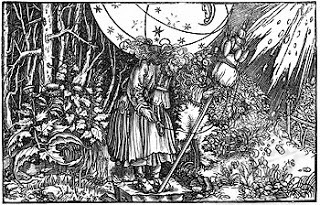
August 2012 commemorates the 400th Anniversary of the Pendle Witch Trials in which nine people from the Pendle region in Lancashire, England were hanged as witches based on the testimony of a nine-year-old girl. Mother Demdike, the most notorious of the accused witches, died in Lancaster Prison before she could even come to trial. She is the heroine of my novel Daughters of the Witching Hill .
To commemorate this solemn anniversary, I will be taking part in several events this summer.
8:00 Friday 15 June, I'll be telling tales of cunning woman Mother Demdike and the Queen of Elfhame at the Storytelling Circle at Pendle Witch Camp.
2:30 Sunday 24 June, I shall appear in historical costume to discuss the Pendle Witches' true and tragic story and to read from Daughters of the Witching Hill at Pendle Heritage Centre in Barrowford.
August 17-19, I'll be a speaker at the Capturing Witches Conference at Lancaster University, a multi-disciplinary academic gathering with speakers addressing everything from historical witchcraft to fictional treatments of the witches to Neopagan belief to the current witchhunts still targeting children in Nigeria.
It's my hope that these events draw attention to the often overlooked fact that the Lancashire Witches are not some ghoulish sideshow, but real women and men who suffered and died on account of ignorance and religious intolerance. May all witch hunts end forever.
Published on June 01, 2012 04:48
May 12, 2012
The Late Great Canonization of St. Hildegard of Bingen
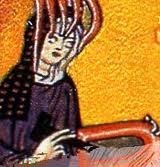 On May 10, 2012, Benedict XVI formally recognized Hildegard von Bingen as a saint.
On May 10, 2012, Benedict XVI formally recognized Hildegard von Bingen as a saint. If Hildegard has long been venerated as a saint with her own feast day of September 17, why did it take the Vatican so long to canonize her? Why Hildegard and why now?
The first attempt to canonize Hildegard began in 1233, but failed as over fifty years had passed since her death and most of the witnesses and beneficiaries of her reported miracles were deceased. Her theological writings were deemed too dense and difficult for subsequent generations to understand and soon fell into obscurity, as did her music.
According Barbara Newman, Hildegard was remembered mainly as an apocalyptic prophet. But in the age of Enlightenment, prophets and mystics went out of fashion. Hildegard was dismissed as a hysteric and even her authorship of her own work was disputed. Pundits began to suggest her books had been written by a man.
Newman states that Hildegard’s contemporary rehabilitation and resurgence was due mainly to the tireless efforts of the nuns at Saint Hildegard Abbey. In 1956 Marianne Schrader and Adelgundis Führkötter, OSB, published a carefully documented study that proved the authenticity of Hildegard’s authorship. Their research provides the foundation of all subsequent Hildegard scholarship.
In the 1980s, in the wake of a wider women’s spirituality movement, Hildegard’s star rose as seekers from diverse faith backgrounds embraced her as a foremother and role model. The artist Judy Chicago showcased Hildegard at her iconic feminist Dinner Party installation. Medievalists and theologians rediscovered Hildegard’s writings. New recordings of her sacred music hit the popular charts. The radical Dominican monk Matthew Fox adopted Hildegard as the figurehead of his creation-centered spirituality. Fox’s book Illuminations of Hildegard of Bingen remains one of the most accessible and popular books on the 12th century visionary. In 2009, German director Margarethe von Trotta made Hildegard the subject of her luminous film, Vision. And all the while, the sisters at Saint Hildegard Abbey were exerting their quiet pressure on Rome to get Hildegard the official endorsement they believed she deserved.
Pope John Paul II, who had canonized more saints than any previous pontiff, steadfastly ignored Hildegard’s burgeoning cult, possibly because he was repelled by her status as a feminist icon. Ironically it is his successor, Benedict XVI, one of the most conservative popes in recent history—who, as Cardinal Ratzinger, defrocked Matthew Fox—is finally giving Hildegard her due. Reportedly Joseph Ratzinger, a German, has long admired Hildegard.
I, for one, am heartened that Hildegard, the great polymath and powerfrau, is finally receiving this official recognition. Her ethereal music, her philosophy of natural medicine, her transcendent visions, mandala-like illuminations, and her insights on the immanent divine in the natural world have made her icon to people all faith backgrounds. I can only hope her canonization and her upcoming elevation to Doctor of the Church will
allows many more people to be inspired by her life and work.
Published on May 12, 2012 05:14
February 25, 2012
British Folk Magic & Familiar Spirits
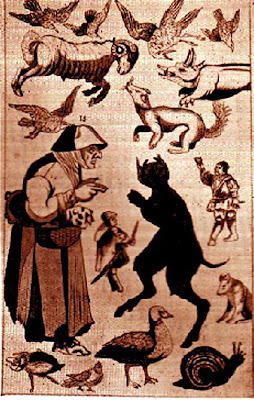
In popular imagination, the figure of a witch is accompanied by her familiar, a black cat. Is there any historical authenticity behind this cliché?
Our ancestors in the 16th and 17th centuries believed that magic was real. Not only the poor and ignorant believed in witchcraft and the spirit world—rich and educated people believed in spellcraft just as strongly. Cunning folk were men and women who used charms and herbal cures to heal, foretell the future, and find the location of stolen property. What they did was illegal—sorcery was a hanging offence—but few were arrested. The need for the services they provided was too great. Doctors were so expensive that only the very rich could afford them and the "physick" of this era involved bleeding patients with lancets and using dangerous medicines such as mercury—your local village healer with her herbal charms was far less likely to kill you.
Those who used their magic for good were called cunning folk or charmers or blessers or wisemen and wisewomen. Those who were perceived by others as using their magic to curse and harm were called witches. But here it gets complicated. A cunning woman who performs a spell to discover the location of stolen goods would say that she is working for good. However, the person who claims to have been falsely accused of harbouring those stolen goods could turn around and accuse her of sorcery and slander. Ultimately the difference between cunning folk and witches lay in the eye of the beholder.
While witch-hunters were obsessed with extracting "evidence" of a pact between the accused witch and the devil, there's little if any substantive proof of diabolical worship in Britain in this period. It seemed the black mass was a Continental European concept first popularised in Britain by King James I' polemic, Daemonologie, a witch-hunter's handbook and required reading for his magistrates.
In traditional British folk magic, it was not the devil, but the familiar spirit who took centre stage. The familiar was the cunning person's otherworldly spirit helper who could shapeshift between human and animal form. Elizabeth Southerns, aka Old Demdike, was a cunning woman of long standing repute, arrested on witchcraft charges in the 1612 Pendle witch hunt in Lancashire, England. When interrogated by her magistrate, she made no attempt to conceal her craft. In fact she described in rich detail how her familiar spirit, Tibb, first appeared to her when she was walking past a quarry at twilight. Assuming the guise of a beautiful, golden-haired young man, his coat half black, half brown, he promised to teach her all she needed to know about the ways of magic. When not in human form, he could appear to her as a brown dog or a hare. Her partnership with Tibb would span decades.
Mother Demdike was so forthcoming about her familiar because without one, she, as a cunning woman, would be a fraud. In traditional English folk magic, it seemed that no cunning man or cunning woman could work magic without the aid of their familiar spirit—they needed this otherworldly ally to make things happen.
Black cats were not the most popular guise for a familiar to take. In fact, familiars were more likely to appear as dogs. In the Salem witch trials of 1692, two canines were put to death as suspected witch familiars.
But the familiar was just as likely to assume human form, generally the opposite gender of their human partner—cunning men usually had female spirits while cunning women usually had male spirits.
Was there a connection between the familiar spirits and the Fairy Faith, the lingering belief in fey folk and elves? Popular belief in fairies in the Early Modern period is well documented. In his 1677 book, The Displaying of Supposed Witchcraft, Lancashire author John Webster mentions a local cunning man who claimed that his familiar spirit was none other than the Queen of Elfhame herself. In 1576, Scottish cunning woman Bessie Dunlop, executed for witchcraft and sorcery at the Edinburgh Assizes, stated that her familiar spirit had been sent to her by the Queen of Elfhame. For more background on this subject, I highly recommend Emma Wilby's scholarly study, Cunning Folk and Familiar Spirits, and Keith Thomas's social history, Religion and the Decline of Magic.
Published on February 25, 2012 12:19
February 14, 2012
A Short History of Valentine's Day
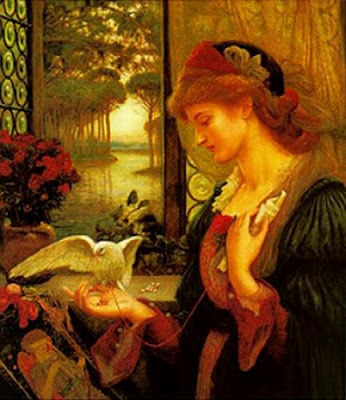
The origins of Saint Valentine's Day lie shrouded in obscurity. Saint Valentine himself, a third century Roman martyr, seems to have nothing to do with the romantic traditions that became associated with his feast.
Dr. Douce, in his Illustrations of Shakespeare, cited in The Book of Days, writes:
It was the practice in ancient Rome, during a great part of the month of February, to celebrate the Lupercalia, which were feasts in honour of Pan and Juno. whence the latter deity was named Februata, Februalis, and Februlla. On this occasion, amidst a variety of ceremonies, the names of young women were put into a box, from which they were drawn by the men as chance directed. The pastors of the early Christian church, who, by every possible means, endeavoured to eradicate the vestiges of pagan superstitions, and chiefly by some commutations of their forms, substituted, in the present instance, the names of particular saints instead of those of the women: and as the festival of the Lupercalia had commenced about the middle of February, they appear to have chosen St. Valentine's Day for celebrating the new feast, because it occurred nearly at the same time.
The first mention of Valentine's Day traditions in England originate from the 14th century writers Geoffrey Chaucer and John Gower who both allude to the folk belief that birds choose their mates on the feast of Saint Valentine, their patron.
In Britain, the mating flights of crows, rooks, and ravens can generally be observed by February 14. Here in Lancashire, I notice more and more birdsong each day as February advances and the birds repair their nests, preparing for a new cycle of birth and life.
Around 1440, John Lydgate's poem in honour of Queen Katherine, widow of Henry V, is the first to mention romantic traditions among humans associated with this date:
To look and search Cupid's calendar,
And choose their choice, the great affection.
People of both sexes sent tokens of admiration. You could either send a token to the romantic interest of your choice, or draw lots as to who would receive your Valentine. In 1470s Norfolk, the Paston family seems to have perferred drawing lots rather than sending tokens to a chosen person.
Actual Valentines could be quite costly. In 1523, Sir Henry Willoughby, gentleman of Warwickshire, paid 2S, 3d for his. Unfortunately no description of this costly item remains for us today.
After the Reformation, the feast of Saint Valentine was abolished, and yet the amorous traditions flourished.
By 1641, the system of casting lots for Valentines was so well known in Edinburgh that a wag waggishly proposed their new Lord Chancellor be chosen by the same method.
A Dutch visitor to London in 1663 observed:
it is customary, alike for married and unmarried people, that the first person one meets in the morning, that is, if one if a man, the first woman or girl, becomes one's Valentine. He asks her name which he takes down and carries on a long strip of paper in his hat band, and in the same way the woman or girl wears his name on her bodice; but it is the practice that they meet on the evening before and choose each other for their Valentine, and, come Easter, they send each other gloves, silk stockings, or sometimes a miniature portrait, which the ladies wear to foster the friendship.
In his diaries of the same decade, Samuel Pepys reveals how he would call by a colleague's house early in the day in order to make the man's daughter his Valentine. Pepys would also arrange for a young man to call to pay the same homage to Mrs. Pepys and bring her presents, which Pepys then paid for. One year when Pepys was short of cash, alas, no young man with presents appeared and Mrs. Pepys was quite irate. Eventually they settled on a yearly ritual, whereby Pepys's cousin paid a visit to honour Mrs. Pepys and bring her presents which Pepys knew she desired.
Sources:
The Book of Days
Ronald Hutton, The Stations of the Sun: A History of the Ritual Year in Britain
Published on February 14, 2012 05:55
January 15, 2012
Witch Persecutions, Women, and Social Change: Germany 1560-1660
PART FOUR, Last in a series
Read Part One, Part Two, and Part Three
.
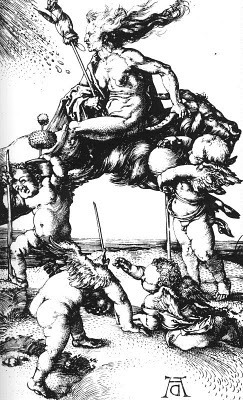
The late 16th and early 17th century was an era of radical social, economic, and religious change. As women had much to lose, they had reason to rebel. And they remained a threat to the new social order. Art of this period often depicted women as insubordinate and wanton: beating their husbands, swilling wine, and lustfully dragging men to bed (Merchant 133). Reformer John Knox was of the opinion that if a woman was presumptuous enough to rise above a man, she must be "repressed and bridled" (Ibid 145). This was one of the most bitterly misogynistic eras ever known.
Political and religious leaders seemed terrified by their fear that witches had organized themselves into a secret female society, as described in Kramer and Sprenger's Malleus Maleficarum and King James's Daemonologie, among other works.
During witch trials, the witchfinders obsessively tried to force the accused to describe what went on at the alleged sabbat and to name the other women she had seen there. Georg Pictorious, a physician and scholar at the University of Freiburg in Germany, believed that witch persecutions were the only way humanity might be saved from these evil women. He maintained that if all the witches "are not burned, the number of these furies swells up in such an immense sea that no one could live safe from their spells and charms" (Midelfort 59).
In the 1970s and 1980s, some feminist historians such as Barbara Ehrenreich and Deirdre English drew on Margaret Murray's study from the 1920s, The Witch Cult of Western Europe, to try to prove that there was indeed a secret society of women who practiced magic as part of an organized pagan cult. (See Ehrenreich and English's Witches, Midwives, and Nurses: A History of Women Healers)
While these speculations are very interesting, scant evidence exists to support this theory and most of it is based on torture-induced confessions.
It is, however, safe to state that people during the period of the witch persecutions sincerely believed and feared the existence of a secret female society.
Witches were believed to be a threat to both Christianity and to the middle class as it struggled to gain social authority (Hoher 46). The anti-puritan, plebian culture of lower class women stood in the way of the new values of the emerging bourgeois society. The stereotype of an organization of women out of control of society, women who cursed their enemies and mocked Christianity with their bizarre orgies, is perhaps indicative of an actual grain of reality behind the public fears. Hoher suggests that the rapidly changing society in Early Modern times, the role of the individual in a world that seemed increasingly confusing and uncertain, led to a collective insecurity--a fear that society would regress into old feudal traditions and chaos.
This fear was taken out brutally on those who would not integrate into the new order. The continuing disorder of the rural plebian culture and the refusal to conform to the new system took shape in the paranoia of the witch craze. Women, who according to Thomas Aquinas, Kramer, Sprenger, and others, were by nature weak-willed and sensual, were feared as the chief representatives of this rebellion--the chaos of uncontrolled nature and sexuality that must be subdued. Thus, it was these disorderly, uncontrollable women who were the most feared and hated. For the new order to survive, these women must be brutally exterminated (Ibid 42).
In examining the chronology of the witch trials, we see that the first trials targeted mainly poor, elderly women. As time went on and rich people and men started being accused, the witch hunts were considered to have got out of hand and they lost popular support. By this time, however, the new capitalism and religious order had been firmly established and the persecutions were no longer necessary.
This chronology reveals clearly what interests were at stake. The earliest trials of the 1560s focused almost exclusively on poor, older women. In the early trials of Wiesensteig and Rothenburg, 95 to 100% of the accused fit this stereotype. As the witch hunts progressed and the accused were tortured to name other witches, more and more men and upper class people were implicated (Midelfort 179). In Ellwangen in 1615, "accusations and convictions of highly placed and undoubtedly honorable men must have shaken people into recognizing that something had gone wrong" (Ibid 105).
Slowly the caricature of the witch as an old peasant woman was breaking down, "leaving society with no protective stereotypes, no sure way of telling who might be, and who could not be, a witch" (Ibid 182). Witch hunting so thoroughly shook up normal bonds of social trust that the most respected members of the community were no longer immune. The trials began to draw more and more criticism. Finally in 1672, the council of Altdorf in Schwaben declared all accusations of witchcraft illegal (Ibid 82). By this time, the persecutions had accomplished their original goal--the subjugation of rebellious lower class women and firmly entrenching those who survived the witch hunts into a subordinate domestic role. By the late 17th century we have no more illustrations of threatening, insubordinate women asserting their power.
Why this emphasis on poor and elderly women and why the last half of the 16th and first half of the 17th century? This period was crucial for the development of modern capitalism, a stricter moral code, and the placement of women into a narrowly defined domestic sphere, with utter economic dependence on their father or husband. The women who would most likely resist, at least in the early years of the persecutions, would be the older peasant women who remembered and clung to the old ways of plebian agrarian culture, the domestic economy, and the social and economic power they enjoyed. Such women would not easily relinquish their economic independence, their right of subsistence, or their personal freedom. The young woman beating her husband with her distaff, the symbol of her economic independence, in the early 16th century, became the old woman accused of witchcraft fifty years on. Note that in the 16th century illustrations I have included here, the old witch is depicted not with a broomstick but with her distaff.
Post-menopausal women were unburdened by pregnancies and childbirth. This gave them more freedom, time, and energy to stir up trouble. The accused witches' descriptions of the sabbat sound like the witch hunters' perversion of the joys of plebian peasant culture--drinking, dancing, and uninhibited celebration and sexuality. The earthly pleasures of the older generation became the evil heresy of the next. Since the descriptions of the alleged sabbat were drawn by torture, we must be cautious when drawing conclusions, but it makes a certain amount of sense in this historical context.
The women who had been strong, economically independent, and pleasure-loving members of the previous generation would not throw away their old privileges easily, so they became the witches of the new generation, a threat to society that had to be violently subdued for the new order to become established.
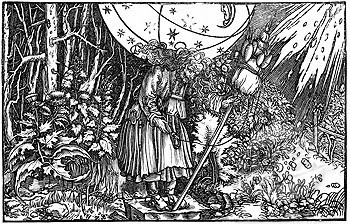
Sources:
Hoher, Friederike, "Hexe, Maria und Hausmutter--zur Geschichte der Weiblichket im Spaetmittelalter," Frauen in der Geschichte (Vol III) Kuhn/Rusen, (eds.). Padagogischer Verlag Schwann-Bagel, Dusseldorf, 1983.
Merchant, Carolyn, The Death of Nature: Women, Ecology, and the Scientific Revolution, Harper & Row, San Francisco, 1979.
Midelfort, Erik, H.C., Witch Hunting in Southwest Germany 1562-1684: The Social Foundations Stanford, 1972.
Ruether, Rosemary, New Woman/New Earth: Sexist Ideologies and Human Liberation, Seabury Press, New York, 1975.
Note: This essay was my Senior Paper I wrote in 1988 while an undergraduate at the University of Minnesota. Some of the sources may seem dated, but I think most of the history still stands up.
In recent years some serious scholars have revisited Margaret Murray's contention that there was indeed a secret female society in Europe during the period of the witch persecutions. See Carlo Ginzburg's book Ecstasies: Deciphering the Witches' Sabbath and Emma Wilby's brilliant new book The Visions of Isobel Gowdie.
This website provides an interesting and well-researched view into medieval folk magic and possible pagan survivals in evidence before the beginning of the witch persecutions.
Read Part One, Part Two, and Part Three
.

The late 16th and early 17th century was an era of radical social, economic, and religious change. As women had much to lose, they had reason to rebel. And they remained a threat to the new social order. Art of this period often depicted women as insubordinate and wanton: beating their husbands, swilling wine, and lustfully dragging men to bed (Merchant 133). Reformer John Knox was of the opinion that if a woman was presumptuous enough to rise above a man, she must be "repressed and bridled" (Ibid 145). This was one of the most bitterly misogynistic eras ever known.
Political and religious leaders seemed terrified by their fear that witches had organized themselves into a secret female society, as described in Kramer and Sprenger's Malleus Maleficarum and King James's Daemonologie, among other works.
During witch trials, the witchfinders obsessively tried to force the accused to describe what went on at the alleged sabbat and to name the other women she had seen there. Georg Pictorious, a physician and scholar at the University of Freiburg in Germany, believed that witch persecutions were the only way humanity might be saved from these evil women. He maintained that if all the witches "are not burned, the number of these furies swells up in such an immense sea that no one could live safe from their spells and charms" (Midelfort 59).
In the 1970s and 1980s, some feminist historians such as Barbara Ehrenreich and Deirdre English drew on Margaret Murray's study from the 1920s, The Witch Cult of Western Europe, to try to prove that there was indeed a secret society of women who practiced magic as part of an organized pagan cult. (See Ehrenreich and English's Witches, Midwives, and Nurses: A History of Women Healers)
While these speculations are very interesting, scant evidence exists to support this theory and most of it is based on torture-induced confessions.
It is, however, safe to state that people during the period of the witch persecutions sincerely believed and feared the existence of a secret female society.
Witches were believed to be a threat to both Christianity and to the middle class as it struggled to gain social authority (Hoher 46). The anti-puritan, plebian culture of lower class women stood in the way of the new values of the emerging bourgeois society. The stereotype of an organization of women out of control of society, women who cursed their enemies and mocked Christianity with their bizarre orgies, is perhaps indicative of an actual grain of reality behind the public fears. Hoher suggests that the rapidly changing society in Early Modern times, the role of the individual in a world that seemed increasingly confusing and uncertain, led to a collective insecurity--a fear that society would regress into old feudal traditions and chaos.
This fear was taken out brutally on those who would not integrate into the new order. The continuing disorder of the rural plebian culture and the refusal to conform to the new system took shape in the paranoia of the witch craze. Women, who according to Thomas Aquinas, Kramer, Sprenger, and others, were by nature weak-willed and sensual, were feared as the chief representatives of this rebellion--the chaos of uncontrolled nature and sexuality that must be subdued. Thus, it was these disorderly, uncontrollable women who were the most feared and hated. For the new order to survive, these women must be brutally exterminated (Ibid 42).
In examining the chronology of the witch trials, we see that the first trials targeted mainly poor, elderly women. As time went on and rich people and men started being accused, the witch hunts were considered to have got out of hand and they lost popular support. By this time, however, the new capitalism and religious order had been firmly established and the persecutions were no longer necessary.
This chronology reveals clearly what interests were at stake. The earliest trials of the 1560s focused almost exclusively on poor, older women. In the early trials of Wiesensteig and Rothenburg, 95 to 100% of the accused fit this stereotype. As the witch hunts progressed and the accused were tortured to name other witches, more and more men and upper class people were implicated (Midelfort 179). In Ellwangen in 1615, "accusations and convictions of highly placed and undoubtedly honorable men must have shaken people into recognizing that something had gone wrong" (Ibid 105).
Slowly the caricature of the witch as an old peasant woman was breaking down, "leaving society with no protective stereotypes, no sure way of telling who might be, and who could not be, a witch" (Ibid 182). Witch hunting so thoroughly shook up normal bonds of social trust that the most respected members of the community were no longer immune. The trials began to draw more and more criticism. Finally in 1672, the council of Altdorf in Schwaben declared all accusations of witchcraft illegal (Ibid 82). By this time, the persecutions had accomplished their original goal--the subjugation of rebellious lower class women and firmly entrenching those who survived the witch hunts into a subordinate domestic role. By the late 17th century we have no more illustrations of threatening, insubordinate women asserting their power.
Why this emphasis on poor and elderly women and why the last half of the 16th and first half of the 17th century? This period was crucial for the development of modern capitalism, a stricter moral code, and the placement of women into a narrowly defined domestic sphere, with utter economic dependence on their father or husband. The women who would most likely resist, at least in the early years of the persecutions, would be the older peasant women who remembered and clung to the old ways of plebian agrarian culture, the domestic economy, and the social and economic power they enjoyed. Such women would not easily relinquish their economic independence, their right of subsistence, or their personal freedom. The young woman beating her husband with her distaff, the symbol of her economic independence, in the early 16th century, became the old woman accused of witchcraft fifty years on. Note that in the 16th century illustrations I have included here, the old witch is depicted not with a broomstick but with her distaff.
Post-menopausal women were unburdened by pregnancies and childbirth. This gave them more freedom, time, and energy to stir up trouble. The accused witches' descriptions of the sabbat sound like the witch hunters' perversion of the joys of plebian peasant culture--drinking, dancing, and uninhibited celebration and sexuality. The earthly pleasures of the older generation became the evil heresy of the next. Since the descriptions of the alleged sabbat were drawn by torture, we must be cautious when drawing conclusions, but it makes a certain amount of sense in this historical context.
The women who had been strong, economically independent, and pleasure-loving members of the previous generation would not throw away their old privileges easily, so they became the witches of the new generation, a threat to society that had to be violently subdued for the new order to become established.

Sources:
Hoher, Friederike, "Hexe, Maria und Hausmutter--zur Geschichte der Weiblichket im Spaetmittelalter," Frauen in der Geschichte (Vol III) Kuhn/Rusen, (eds.). Padagogischer Verlag Schwann-Bagel, Dusseldorf, 1983.
Merchant, Carolyn, The Death of Nature: Women, Ecology, and the Scientific Revolution, Harper & Row, San Francisco, 1979.
Midelfort, Erik, H.C., Witch Hunting in Southwest Germany 1562-1684: The Social Foundations Stanford, 1972.
Ruether, Rosemary, New Woman/New Earth: Sexist Ideologies and Human Liberation, Seabury Press, New York, 1975.
Note: This essay was my Senior Paper I wrote in 1988 while an undergraduate at the University of Minnesota. Some of the sources may seem dated, but I think most of the history still stands up.
In recent years some serious scholars have revisited Margaret Murray's contention that there was indeed a secret female society in Europe during the period of the witch persecutions. See Carlo Ginzburg's book Ecstasies: Deciphering the Witches' Sabbath and Emma Wilby's brilliant new book The Visions of Isobel Gowdie.
This website provides an interesting and well-researched view into medieval folk magic and possible pagan survivals in evidence before the beginning of the witch persecutions.
Published on January 15, 2012 05:08
November 23, 2011
Hildegard comes home
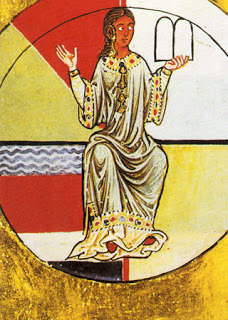 Hildegard's vision of Sapienta, Divine Wisdom
Hildegard's vision of Sapienta, Divine WisdomMy final revision of my new novel, ILLUMINATIONS: A NOVEL OF HILDEGARD VON BINGEN, are complete. Houghton Mifflin Harcourt will publish the novel in November 2012, just in time for the next US presidential election. HILDEGARD FOR PRESIDENT, PLZ!!!
I've been working on this novel since 2008 and it feels wonderful to finally bring my homage to this very complex and inspiring woman to fruition.
Here's a report about my 2009 pilgrimage to Bingen and Disibodenberg in Germany.
Hildegard of Bingen (1098-1179), Benedictine abbess and polymath, composed an entire corpus of sacred music and wrote nine books on subjects as diverse as theology, natural science, medicine, and human sexuality—a prodigious intellectual outpouring that put many of her male contemporaries to shame. A mystic and visionary, her prophecies earned her the title Sibyl of the Rhine. An outspoken critic of political and ecclesiastical corruption, she courted controversy and nearly died an excommunicant. Her courage and originality of thought continue to inspire people today.
My novel ILLUMINATIONS reveals the unforgettable story of how Hildegard triumphed against impossible odds to become the greatest woman of her age.
In 1106, eight-year-old Hildegard is offered as a tithe to the Church and bricked into an anchorage with the disturbed Jutta von Sponheim, only fourteen herself. Rejecting Jutta's masochistic piety, Hildegard's secret visions comfort her with a far more nurturing face of the divine. She finds an ally in the young monk Volmar who smuggles her books that feed her bottomless hunger for learning.
Jutta's saintly reputation attracts a following of child dedicants, but her extreme asceticism leads to her premature death. Now thirty-eight, Hildegard must find a way to liberate her sisters from the soul-destroying anchorage. Meanwhile her visions threaten to overwhelm her. Seized by a violent awakening, she must shatter the silence and speak of her revelations of the Living Light. Her abbot, determined to suppress this rebel nun, charges her with heresy.
Hildegard must make the gamble of a lifetime, putting her very life on the line to blaze the trail that will lead her sisters to a free and dignified existence. But she will pay the highest price for her independence of mind. Combining fiction, history, and Hildegardian philosophy, ILLUMINATIONS is my ecstatic homage to a woman of faith and power—a visionary in every sense of the word.
Here are some of the early blurbs we received. My unending gratitude goes out to these wonderful authors for their support and enthusiasm:
"I love Mary Sharratt. The grace of her writing and the grace of her subject combine seamlessly in this wonderful novel about the amazing, too-little-known saint, Hildegard of Bingen, a mystic and visionary. Sharratt captures both the pain and the beauty such gifts bring, as well as bringing to life a time of vast sins and vast redemptions."
Karleen Koen, author of Before Versailles and the best-selling Through a Glass Darkly
"I loved Mary Sharratt's Daughters of the Witching Hill, but she has outdone herself with Illuminations: A Novel of Hildegard von Bingen. She brings one of the most famous and enigmatic women of the Middle Ages to vibrant life in this tour de force, which will captivate the reader from the very first page."
Sharon Kay Penman, New York Times bestselling author of Time and Chance
"There is ecstasy in the writing of this redemptive novel of a 12th century woman who found a world of cruelty and filled it with beauty, a powerless woman who discovered her own power and led other women to find their own. Illuminations is a radiantly beautiful book. Readers will long remember Hildegard and the gifts she left us."
Stephanie Cowell, author of Marrying Mozart, Claude & Camille: a >novel of Monet and The Physician of London (American Book Award)
"With elegance and sensitivity, Mary Sharratt rescues Hildegard Von Bingen from the obscurity of legend, bringing to life the flesh-and-blood woman in all her conflict, faith, and unwavering tenacity. Illuminations is an astonishing revelation of a visionary leader willing to sacrifice everything to defend her beliefs in a dangerous time of oppression."
C.W. Gortner, author of The Confessions of Catherine de Medici
"An enchanting beginning to the story of the perennially fascinating 12th century mystic, Hildegard of Bingen. It is easy to paint a picture of a saint from the outside but much more difficult to show them from the inside. Mary Sharratt has undertaken this with sensitivity and grace."
Margaret George, author of Elizabeth I and Mary Called Magdalene
Published on November 23, 2011 03:50
November 15, 2011
The Pendle Witches and Their Magic, Part Two
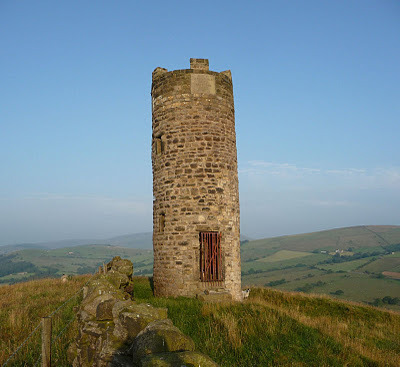
Blacko Tower, a Victorian folly (ca 1890) near Malkin Tower Farm, Lancashire
The crimes of which Mother Demdike and her fellow witches were accused dated back years before the 1612 trial. The trial itself might have never happened had it not been for King James I's obsession with the occult. Until his reign, witch persecutions had been relatively rare in England compared with Scotland and Continental Europe. But James's book Daemonologie presented the idea of a vast conspiracy of satanic witches threatening to undermine the nation. Shakespeare wrote his play Macbeth, which presents the first depiction of a witches' coven in English drama, in James I's honour.
To curry favour with his monarch, Lancashire magistrate Roger Nowell of Read Hall arrested and prosecuted no fewer than twelve individuals from the Pendle region and even went to the far fetched extreme of accusing them of conspiring their very own Gunpowder Plot to blow up Lancaster Castle. Two decades before the more famous Matthew Hopkins began his witch-hunting career in East Anglia, Roger Nowell had set himself up as witchfinder general of Lancashire.
What do we actually know about Mother Demdike? At the time of her trial she appears as a widow and matriarch, living in a place called Malkin Tower with her widowed daughter Elizabeth Device, and her three grandchildren, James, Alizon, and Jennet. Her clan was very poor and supported themselves by a combination of begging and by the family business of cunning craft. The trial transcripts mention that local farmer John Nutter of Bull Hole Farm near Newchurch hired Demdike to bless his sick cattle. Interestingly John Nutter chose not to testify against her family in the trial.
Demdike's family at Malkin Tower had a powerful rival in the form of Chattox, another widow and charmer, who lived a few miles away at West Close near Fence. Chattox allegedly bewitched to death her landlord's son, Robert Nutter of Greenhead, for attempting to rape her daughter, Anne Redfearne. For social historians it's interesting to see how having a fearsome reputation as a cunning woman could be the only true power a poor woman could hope to wield.
Unfortunately this could also backfire as it did with Demdike's granddaughter, Alizon Device, who exchanged angry words with a pedlar outside Colne in March, 1612. Moments later the pedlar collapsed and suddenly went stiff and lame on one half of his body and lost the power of speech. Today we would clearly recognise this as a stroke. But the pedlar and several witnesses were convinced that Alizon had lamed her victim with witchcraft. Even she seemed to believe this herself, immediately falling to her knees and begging his forgiveness. This unfortunate event triggered the arrest of Alizon and her grandmother. Alizon wasted no time in implicating Chattox, her grandmother's rival, and Chattox's daughter, Anne Redfearne.
The four accused witches were interrogated by Roger Nowell, and then force-marched to Lancaster Castle, walking over fells and moorland. Both Demdike and Chattox, whose real name was Anne Whittle, were frail and elderly. It was amazing they survived the journey. In Lancaster they were handed over to the sadistic Thomas Covell, the gaoler who reputedly slashed the ears off Edward Kelly, friend of John Dee, when he was arrested on the charge of forgery. The women were chained to a ring in the floor in the bottom of the Well Tower. Although torture was officially forbidden in England, gaolers were allowed to starve and beat their prisoners at will. Being chained to a ring in the floor and kept in constant darkness would certainly feel like torture for those who had to endure it.
On Good Friday following the arrests, worried family and friends met at Malkin Tower to discuss what they would do in regard to this tragic situation. Constable John Hargreaves came to write down the names of everyone present and later Roger Nowell made further arrests, accusing these people of convening at Malkin Tower on Good Friday for a witches' sabbat, something he would have read about in Daemonologie. The arrests didn't stop until he had the mythical thirteen to make up the alleged coven. Twelve were kept at Lancaster and one, Jennet Preston who lived over the county line in Gisburn, Yorkshire, was sent to York. Apart from Chattox and Demdike and their immediate families, none of these newly arrested people had previous reputations as cunning folk. It seemed they were just concerned friends and neighbours who were caught in the wrong place at the wrong time.
Kept in such horrible conditions, Demdike died in prison before she came to trial, thus cheating the hangman. The others experienced a different fate.
The first to be arrested, Alizon was the last to be tried at Lancaster in August, 1612. Her final recorded words on the day before she was hanged for witchcraft are a moving tribute to her grandmother's power as a healer. Roger Nowell, the prosecutor, brought John Law, the pedlar she had allegedly lamed, before her. Again Alizon begged the man's forgiveness for her perceived crime against him. John Law, in return, said that if she had the power to lame him, she must also have the power to heal him. Alizon regrettably told him that she wasn't able to, but if her grandmother, Old Demdike had lived, she could and would have healed him.
Mother Demdike is dead but not forgotten. By the mid-17th century, Demdike's name became a local byword for witch, according to John Harland and T.T. Wilkinson's Lancashire Folklore. In 1627, only fifteen years after the Pendle Witch Trial, a woman named Dorothy Shaw of Skippool, Lancashire, was accused by her neighbour of being a "witch and a Demdyke."
History is a fluid thing that continually shapes the present. Long after her demise, Mother Demdike and her fellow Pendle Witches endure, their story and spirit woven into the living landscape, its weft and warp, like the stones and the streams that cut across the moors. Enthralled by their true history, I wrote my novel, Daughters of the Witching Hill, dedicated to their memory. Other books have been written about the Pendle Witches, but mine turns the tables, telling the story from Demdike and Alizon Device's point of view. I longed to give these women what their world denied them—their own voice. Their voices deserve to finally be heard.
Sources:
Owen Davies, Popular Magic: Cunning-folk in English History (Hambledon Continuum)
Eamon Duffy, The Stripping of the Altars: Traditional Religion in England 1400-1580 (Yale)
Malcolm Gaskill, Witchfinders: A Seventeenth Century English Tragedy (John Murray)
John Harland and T.T. Wilkinson, Lancashire Folklore (Kessinger Publishing)
King James I, Daemonologie, available online
Jonathan Lumby, The Lancashire Witch-Craze (Carnegie)
Margaret Murray, The Witch Cult in Western Europe, available online
Edgar Peel and Pat Southern, The Trials of the Lancashire Witches (Nelson)
Robert Poole, ed., The Lancashire Witches: Histories and Stories (Manchester University Press)
Thomas Potts, The Wonderfull Discoverie of Witches in the Countie of Lancaster, available online
Keith Thomas, Religion and the Decline of Magic (Penguin)
John Webster, The Displaying of Supposed Witchcraft (Ams Pr Inc)
Emma Wilby, Cunning Folk and Familiar Spirits (Sussex Academic Press)
Benjamin Woolley, The Queen's Conjuror: The Life and Magic of Dr. Dee (Flamingo)
Published on November 15, 2011 03:22
October 23, 2011
The Pendle Witches and Their Magic, Part 1
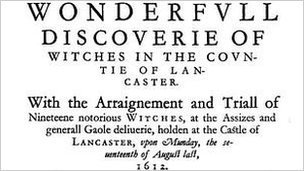
In 1612, in one of the most meticulously documented witch trials in English history, seven women and two men from Pendle Forest in Lancashire, Northern England were executed. In court clerk Thomas Potts's account of the proceedings, The Wonderfull Discoverie of Witches in the Countie of Lancaster, published in 1613, he pays particular attention to the one alleged witch who escaped justice by dying in prison before she could come to trial. She was Elizabeth Southerns, more commonly known by her nickname, Old Demdike. According to Potts, she was the ringleader, the one who initiated all the others into witchcraft. This is how Potts describes her:
She was a very old woman, about the age of Foure-score yeares, and had been a Witch for fiftie yeares. Shee dwelt in the Forrest of Pendle, a vast place, fitte for her profession: What shee committed in her time, no man knows. . . . Shee was a generall agent for the Devill in all these partes: no man escaped her, or her Furies.
Quite impressive for an eighty-year-old lady! In England, unlike Scotland and Continental Europe, the law forbade the use of torture to extract witchcraft confessions. Thus the trial transcripts supposedly reveal Elizabeth Southerns's voluntary confession, although her words might have been manipulated or altered by the magistrate and scribe. What's interesting, if the trial transcripts can be believed, is that she freely confessed to being a healer and magical practitioner. Local farmers called on her to cure their children and their cattle. She described in rich detail how she first met her familiar spirit, Tibb, at the stone quarry near Newchurch in Pendle. He appeared to her at daylight gate—twilight in the local dialect—in the form of beautiful young man, his coat half black and half brown, and he promised to teach her all she needed to know about magic.
Tibb was not the "devil in disguise." The devil, as such, appeared to be a minor figure in British witchcraft. It was the familiar spirit who took centre stage: this was the cunning person's otherworldly spirit helper who could shapeshift between human and animal form, as Emma Wilby explains in her excellent scholarly study, Cunning Folk and Familiar Spirits. Mother Demdike describes Tibb appearing to her at different times in human form or in animal form. He could take the shape of a hare, a black cat, or a brown dog. It appeared that in traditional English folk magic, no cunning man or cunning woman could work magic without the aid of their spirit familiar—they needed this otherworldly ally to make things happen.
Belief in magic and the spirit world was absolutely mainstream in the 16th and 17th centuries. Not only the poor and ignorant believed in spells and witchcraft—rich and educated people believed in magic just as strongly. Dr. John Dee, conjuror to Elizabeth I, was a brilliant mathematician and cartographer and also an alchemist and ceremonial magician. In Dee's England, more people relied on cunning folk for healing than on physicians. As Owen Davies explains in his book, Popular Magic: Cunning-folk in English History, cunning men and women used charms to heal, foretell the future, and find the location of stolen property. What they did was technically illegal—sorcery was a hanging offence—but few were arrested for it as the demand for their services was so great. Doctors were so expensive that only the very rich could afford them and the "physick" of this era involved bleeding patients with lancets and using dangerous medicines such as mercury—your local village healer with her herbs and charms was far less likely to kill you.
In this period there were magical practitioners in every community. Those who used their magic for good were called cunning folk or charmers or blessers or wisemen and wisewomen. Those who were perceived by others as using their magic to curse and harm were called witches. But here it gets complicated. A cunning woman who performs a spell to discover the location of stolen goods would say that she is working for good. However, the person who claims to have been falsely accused of harbouring those stolen goods can turn around and accuse her of sorcery and slander. This is what happened to 16th century Scottish cunning woman Bessie Dunlop of Edinburgh, cited by Emma Wilby in Cunning Folk and Familiar Spirits. Dunlop was burned as a witch in 1576 after her "white magic" offended the wrong person. Ultimately the difference between cunning folk and witches lay in the eye of the beholder. If your neighbours turned against you and decided you were a witch, you were doomed.
Although King James I, author of the witch-hunting handbook Daemonologie, believed that witches had made a pact with the devil, there's no actual evidence to suggest that witches or cunning folk took part in any diabolical cult. Anthropologist Margaret Murray, in her book, The Witch Cult in Western Europe, published in 1921, tried to prove that alleged witches were part of a Pagan religion that somehow survived for centuries after the Christian conversion. Most modern academics have rejected Murray's hypothesis as unlikely. Indeed, lingering belief in an organised Pagan religion is very difficult to substantiate. So what did cunning folk like Old Demdike believe in?
Some of her family's charms and spells were recorded in the trial transcripts and they reveal absolutely no evidence of devil worship, but instead use the ecclesiastical language of the Catholic Church, the old religion driven underground by the English Reformation. Her charm to cure a bewitched person, cited by the prosecution as evidence of diabolical sorcery, is, in fact, a moving and poetic depiction of the passion of Christ, as witnessed by the Virgin Mary. The text, in places, is very similar to the White Pater Noster, an Elizabethan prayer charm which Eamon Duffy discusses in his landmark book, The Stripping of the Altars: Traditional Religion in England 1400-1580.
It appears that Mother Demdike was a practitioner of the kind of quasi-Catholic folk magic that would have been commonplace before the Reformation. The pre-Reformation Church embraced many practises that seemed magical and mystical. People used holy water and communion bread for healing. They went on pilgrimages, left offerings at holy wells, and prayed to the saints for intercession. Some practises, such as the blessing of the wells and fields, may indeed have Pagan origins. Indeed, looking at pre-Reformation folk magic, it is very hard to untangle the strands of Catholicism from the remnants of Pagan belief, which had become so tightly interwoven.
Unfortunately Mother Demdike had the misfortune to live in a place and time when Catholicism was conflated with witchcraft. Even Reginald Scot, one of the most enlightened men of his age, believed the act of transubstantiation, the point in the Catholic mass where it is believed that the host becomes the body and blood of Christ, was an act of sorcery. In a 1645 pamphlet by Edward Fleetwood entitled A Declaration of a Strange and Wonderfull Monster, describing how a royalist woman in Lancashire supposedly gave birth to a headless baby, Lancashire is described thusly: "No part of England hath so many witches, none fuller of Papists." Keith Thomas's social history Religion and the Decline of Magic is an excellent study on how the Reformation literally took the magic out of Christianity.
However, it would be an oversimplification to state that Mother Demdike was merely a misunderstood practitioner of Catholic folk magic. Her description of her decades-long partnership with her spirit Tibb seems to draw on something outside the boundaries of Christianity.
Although it is difficult to prove that witches and cunning folk in early modern Britain worshipped Pagan deities, the so-called fairy faith, the enduring belief in fairies and elves, is well documented. In his 1677 book The Displaying of Supposed Witchcraft, Lancashire author John Webster mentions a local cunning man who claimed that his familiar spirit was none other than the Queen of Elfhame herself. The Scottish cunning woman Bessie Dunlop mentioned earlier, while being tried for witchcraft and sorcery at the Edinburgh Assizes, stated that her familiar spirit was a fairy man sent to her by the Queen of Elfhame.
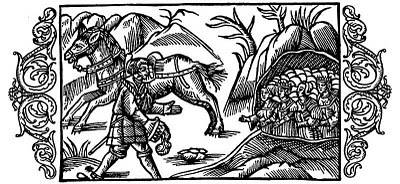
Published on October 23, 2011 02:56
October 16, 2011
All Hallows Eve in Old Lancashire
[image error]
Come Halloween, the popular imagination turns to witches. Especially in Pendle Witch Country, the rugged Pennine landscape surrounding Pendle Hill, once home to twelve individuals arrested for witchcraft in 1612. The most notorious was Elizabeth Southerns, alias Old Demdike, cunning woman of long-standing repute and the heroine of my novel Daughters of the Witching Hill.
How did these historical cunning folk celebrate All Hallows Eve?
All Hallows has its roots in the ancient feast of Samhain, which marked the end of the pastoral year and was considered particularly numinous, a time when the faery folk and the spirits of the dead roved abroad. Many of these beliefs were preserved in the Christian feast of All Hallows, which had developed into a spectacular affair by the late Middle Ages, with church bells ringing all night to comfort the souls thought to be in purgatory. Did this custom have its origin in much older rites of ancestor veneration? This threshold feast opening the season of cold and darkness allowed people to confront their deepest fears—that of death and what lay beyond. And their deepest longings—reunion with their cherished departed.
After the Reformation, these old Catholic rites were outlawed, resulting in one of the longest struggles waged by Protestant reformers against any of the traditional ecclesiastical rituals. Lay people stubbornly continued to hold vigils for their dead—a rite that could be performed without a priest and in cover of darkness. Until the early 19th century in the Lancashire parish of Whalley, some families still gathered at midnight upon All Hallows Eve. One person held a large bunch of burning straw on a pitchfork while the others knelt in a circle and prayed for their beloved dead until the flames burned out.
Long after the Reformation, people persisted in giving round oatcakes, called Soul-Mass Cakes to soulers, the poor who went door to door singing Souling Songs as they begged for alms on the Feast of All Souls, November 2. Each cake eaten represented a soul released from purgatory, a mystical communion with the dead.
In Glossographia, published in 1674, Thomas Blount writes:
Other All Hallows folk rituals invoked the power of fire to purify and ward. In the Fylde district of Lancashire, farmers circled their fields with burning straw on the point of a fork to protect the coming crop from noxious weeds.
Fire was used to protect people from perceived evil spirits active on this night. At Longridge Fell in Lancashire, very close to Pendle Hill, the custom of 'lating' or hindering witches endured until the early 19th century. On All Hallows Eve, people walked up hillsides between 11 pm and midnight. Each person carried a lighted candle and if the flame went out, it was taken as a sign that an attack by a witch was impending and that the appropriate charms must be employed to protect oneself.
What do these old traditions mean to us today?
All Hallows is not just a date on the calendar, but the entire tide, or season, in which we celebrate ancestral memory and commemorate our dead. This is also the season of storytelling, of re-membering the past. The veil between the seen and unseen grows thin and we may dream true.
Wishing a blessed All Hallows Tide to all!
Source: Ronald Hutton, The Stations of the Sun: A History of the Ritual Year in Britain
Links:
Soul Cake Recipes
Souling Songs
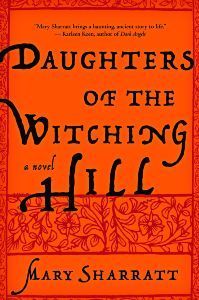
Excerpt from Daughters of the Witching Hill
At Hallowtide, Liza insisted on walking up Blacko Hill, as we'd always done, for our midnight vigil on the Eve of All Saints. Under cover of darkness we crept forth with me carrying the lantern to light our way and John following with a pitchfork crowned in a great bundle of straw.
Once we reached the hilltop, after a furtive look round to make sure no one else was about, John lit the straw with the lantern flame so that the straw atop the pitchfork blazed like a torch. With him to hold the fork upright and keep an eye out for intruders, Liza and I knelt to pray for our dead. In the old days, we'd held this vigil in the church, the whole parish praying together, the darkened chapel bright as day with the many candles glowing on the saints' altars. Now we were left to do this in secret, stealing away like criminals in the night, as though it were something shameful to hail our deceased. I prayed for my mam and grand-dad, calling out to their souls till I felt them both step through the veil to bring me comfort.
In my heart of hearts, I did not believe my loved ones were in purgatory waiting, by and by, to be let into heaven. There was no air of suffering or torment about them, only the joy of reunion. My mam, young and pretty, worked in her herb garden. She hummed a lilting tune whilst her earth-stained fingers pointed out to me the plants I must use to ease Liza's birth pangs. Grand-Dad whispered his old charms to bless me and Liza and John.
A long spell I knelt there, held in the embrace of my beloved dead, till the straw on the pitchfork burned itself out, falling in embers and ash to the ground. Our John helped my pregnant daughter to her feet, then we made our way home through the night that no longer seemed so dark.
Come Halloween, the popular imagination turns to witches. Especially in Pendle Witch Country, the rugged Pennine landscape surrounding Pendle Hill, once home to twelve individuals arrested for witchcraft in 1612. The most notorious was Elizabeth Southerns, alias Old Demdike, cunning woman of long-standing repute and the heroine of my novel Daughters of the Witching Hill.
How did these historical cunning folk celebrate All Hallows Eve?
All Hallows has its roots in the ancient feast of Samhain, which marked the end of the pastoral year and was considered particularly numinous, a time when the faery folk and the spirits of the dead roved abroad. Many of these beliefs were preserved in the Christian feast of All Hallows, which had developed into a spectacular affair by the late Middle Ages, with church bells ringing all night to comfort the souls thought to be in purgatory. Did this custom have its origin in much older rites of ancestor veneration? This threshold feast opening the season of cold and darkness allowed people to confront their deepest fears—that of death and what lay beyond. And their deepest longings—reunion with their cherished departed.
After the Reformation, these old Catholic rites were outlawed, resulting in one of the longest struggles waged by Protestant reformers against any of the traditional ecclesiastical rituals. Lay people stubbornly continued to hold vigils for their dead—a rite that could be performed without a priest and in cover of darkness. Until the early 19th century in the Lancashire parish of Whalley, some families still gathered at midnight upon All Hallows Eve. One person held a large bunch of burning straw on a pitchfork while the others knelt in a circle and prayed for their beloved dead until the flames burned out.
Long after the Reformation, people persisted in giving round oatcakes, called Soul-Mass Cakes to soulers, the poor who went door to door singing Souling Songs as they begged for alms on the Feast of All Souls, November 2. Each cake eaten represented a soul released from purgatory, a mystical communion with the dead.
In Glossographia, published in 1674, Thomas Blount writes:
All Souls Day, November 2d: the custom of Soul Mass cakes, which are a kind of oat cakes, that some of the richer sorts in Lancashire and Herefordshire (among the Papists there) use still to give the poor upon this day; and they, in retribution of their charity, hold themselves obliged to say this old couplet:
God have your soul,
Bones and all.
Other All Hallows folk rituals invoked the power of fire to purify and ward. In the Fylde district of Lancashire, farmers circled their fields with burning straw on the point of a fork to protect the coming crop from noxious weeds.
Fire was used to protect people from perceived evil spirits active on this night. At Longridge Fell in Lancashire, very close to Pendle Hill, the custom of 'lating' or hindering witches endured until the early 19th century. On All Hallows Eve, people walked up hillsides between 11 pm and midnight. Each person carried a lighted candle and if the flame went out, it was taken as a sign that an attack by a witch was impending and that the appropriate charms must be employed to protect oneself.
What do these old traditions mean to us today?
All Hallows is not just a date on the calendar, but the entire tide, or season, in which we celebrate ancestral memory and commemorate our dead. This is also the season of storytelling, of re-membering the past. The veil between the seen and unseen grows thin and we may dream true.
Wishing a blessed All Hallows Tide to all!
Source: Ronald Hutton, The Stations of the Sun: A History of the Ritual Year in Britain
Links:
Soul Cake Recipes
Souling Songs

Excerpt from Daughters of the Witching Hill
At Hallowtide, Liza insisted on walking up Blacko Hill, as we'd always done, for our midnight vigil on the Eve of All Saints. Under cover of darkness we crept forth with me carrying the lantern to light our way and John following with a pitchfork crowned in a great bundle of straw.
Once we reached the hilltop, after a furtive look round to make sure no one else was about, John lit the straw with the lantern flame so that the straw atop the pitchfork blazed like a torch. With him to hold the fork upright and keep an eye out for intruders, Liza and I knelt to pray for our dead. In the old days, we'd held this vigil in the church, the whole parish praying together, the darkened chapel bright as day with the many candles glowing on the saints' altars. Now we were left to do this in secret, stealing away like criminals in the night, as though it were something shameful to hail our deceased. I prayed for my mam and grand-dad, calling out to their souls till I felt them both step through the veil to bring me comfort.
In my heart of hearts, I did not believe my loved ones were in purgatory waiting, by and by, to be let into heaven. There was no air of suffering or torment about them, only the joy of reunion. My mam, young and pretty, worked in her herb garden. She hummed a lilting tune whilst her earth-stained fingers pointed out to me the plants I must use to ease Liza's birth pangs. Grand-Dad whispered his old charms to bless me and Liza and John.
A long spell I knelt there, held in the embrace of my beloved dead, till the straw on the pitchfork burned itself out, falling in embers and ash to the ground. Our John helped my pregnant daughter to her feet, then we made our way home through the night that no longer seemed so dark.
Published on October 16, 2011 03:11
August 27, 2011
Witch Persecutions, Women, and Social Change--Germany: 1560 - 1660
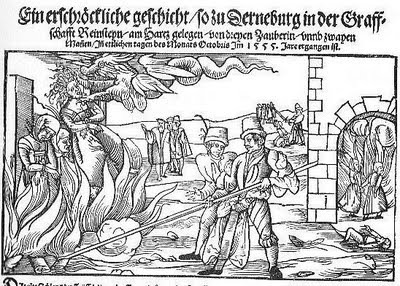
Burning witches, 1555.
PART THREE
(Read Part One and Part Two.)
Major witch hunting panics arose in the 1560s throughout Europe and were especially severe in the German Southwest. Who were the victims of this mass hysteria? Even though witches were believed to come from all social classes, the trials focused on poor, middle-aged or older women (Merchant 138). Throughout Europe, midwives and healers were particularly suspect. These "wise women" who healed with herbs were held especially suspect, as they were often older women who had astonishing empirical knowlege, which their accusers traced back to the devil (Rauer 121). Many other women were targeted, as well. Outsiders and women on the fringe of society were especially vulnerable. Fifty-five of the seventy-one accused witches executed in Rottenweil, Germany, after 1600 came from outside the community, and their execution reflected both xenophobia and "a hatred of the unusual and rootless" (Midelfort 95-96). The blatant persecution of the poor prompted one accused witch in Wiesenstieg to ask her inquisitor why rich women were never arrested (Ibid. 169). Thus, though the witch panics took different forms at different times and places, they never lost their essential character--that of a campaign of terror against lower class women in search of substinence.
The question we must ask when presented with this information is why poor women and why this period in history? To invoke such massive hunts, trials, and executions, these women must have been perceived as a major threat. Whose interests did their annihalation serve? Here, I must agree with Carolyn Merchant that the control and maintenance of the social order and women's place within it was one major underlying motivation for the witch trials (Merchant 138).
The women most likely to be accused and executed were those most visibly discontent with their socio-economic condition. They were the strident women who complained about their situations and would not conform to the increasingly restrictive sphere of femininity of 16th and 17th century Europe. Sharp-tongued mothers-in-law were accused of witchcraft by their own families. Feisty spinsters or widows who refused to remarry were frequent targets of witchcraft allegations. Midelfort cites an example of a widow accused of witchcraft being released on the condition that she live with her son-in-law and remain under his control (Midelfort 184). Another common trait found among accused witches in Southwest Germany was a melancholic dissatisfaction with marriage and conventional religion (Ibid. 92) Begging and complaining about poverty were behaviors that led very frequently to accusations (Rauer 121). In 1505, Heinrich Deichsler reports in his famous Nuernberger Chronik that Barbara, a woman from Schwabach near Nuremburg, was burned as a witch after she had borrowed money from several neighbors and failed to pay them back (Schneider 18-19). The primary personality traits of witches outlined by Kramer and Sprenger in their witch-hunting manual Malleus Maleficarum were infidelity, ambition, and lust--traits that may not have been so noteworthy a few centuries before (Malleus 47). All in all, witch persecutions appeared to focus specifically on headstrong and insubordinate women.
Once a woman was labeled a witch, almost anyone could do anything to her without fear or punishment. Legally she was damned and without rights. Even before she was arrested and taken to trial, her neighbors were allowed to take justice in their own hands. Indeed, neighbors took the lead in making witchcraft accusations--it was quite common to simply call someone one disliked a witch (Midelfort 115).
Once a witch was brought to trial, she was doomed. In Germany, torture was part of the established trial procedure and could legally last for days on end. German prison guards sometimes admitted to committing rape, extortion, and blackmail on prisoners, as well (Midelfort 107). Suspects were tortured until they confessed their participation in evil magic and sex with the devil, and named the other women they had seen at the supposed witches' sabbat. Many trial officials had lists of questions to elicit responses which would conform to established beliefs about witchcraft. Dr. Carl Ellwangen began his inquisitions by asking the accused to recite the Lord's Prayer. Then he immediately asked them who seduced them into witchcraft, how the seduction occured, why they gave in, what it was like to have sex with the devil, and so on (Ibid. 105). Torture could extract almost any confession from anyone. "When suspects proved stubborn, they were often tortured to death" (Ibid. 149). Another common trial procedure reveals the inquisitors' obsession with sexuality. Women were stripped, shaved, and pricked with bodkins all over their bodies in search of supposed witch marks, or searched for signs of intercourse with the devil. In Germany, it was not uncommon for an accused witch's property to be confiscated, with Church and secular authorities receiving their share (Ibid. 178). Because accused witches were tortured until they gave the names of others they had allegedly seen at the sabbat, the more intensely witchcraft was persecuted, and the more numerous the alleged witches became. Thus, the trials and accusations escalated (Trevor-Roper 97).
On a social level, witch persecutions could not only be used to weed out the most troublesome of the undeserving poor, but they also produced a general atmosphere of paranoia and disunity among the population. Even those who consulted accused witches for healing or other services risked becomong suspect (Larner 9). The accused witch served as an example to other women as to how they would be treated if they did as she did. This, of course, helped enforce new moral and religious codes (Ibid 102). For this reason, witch hunting can be viewed as one of the most public and effective forms of social control to evolve in Early Modern Europe (Ibid 64). Witches made convenient community scapegoats for communal misfortunes such as plagues and famines (Midelfort 121). The peasant population focused their anger and resentment at members of their own peer group rather than the ruling classes who exploited them. Thus, the witch persecutions undermined solidarity and cooperation among peasants and were instrumental in curbing rebellion. In Southwest Germany, the great witch trials began not long after the Peasant Wars.
Why were such extreme measures of social control necessary? What was taking place in society at large that caused poor and elderly women to be viewed as such an enormous threat?
The period of 1560 to 1660 was one of drastic economic, religious, and social change. This period witnessed the dissolution of the last remnants of a feudal agrarian and domestic economy in favor of a capitalist market economy (Hobsbawn 5). But for this new order to succeed, the old feudal tradition, in which peasants controlled production and were guaranteed subsistence, had to die. This transition was particularly hard on women. Formerly, in the domestic economy, the workplace was the home and women were active in cottage industries. However, the transition to working in outside the home made participation in this economy more and more difficult for women. Over this period, women were forced out of the guilds and the professions in which they could maintain economic independence. Increasingly they were forced into a narrowly domestic role. By the 16th century, the only opportunities for women to earn a living were in menial servant and labor occupations (Hoher 17). Often this sort of work was so low paid that women wandered penniless and homeless in search of better conditions (Ibid. 18).
Furthermore, by this time, even such traditionally feminine occupations such as healing and midwifery were being taken over by men. In the Renaissance, the trend among the wealthy was to have a university-educated physician at their disposal. After the advent of Paracelsus, the famous medical doctor, only men were officially allowed to practice medicine. Paracelsus himself explained that God granted the educated physician all the arts and faculties most beneficial to serve others and that the doctor must be a true man and not some ignorant old woman (Rauer 109, paraphrasing "So spricht Paracelsus"). Male medical practitioners went so far as to push women out of midwifery. Eucharius Rosslin, author of the foremost "midwife" book, Der Schwangererfrawen und Hebammen rossgarten complained that midwives' supposed incompetence, laziness, and lack of education resulted in high infant mortality. He even denounces them as murderers:
Ich meyn die Hebammen alle sampt
Die also gar kein Wissen handt.
Dazu durch yr Hynlessigkeit
Kind verderben weit und breit.
Und handt so schlechten Fleiss gethon
Dass sie mit Ampt eyn Mort begon. (Ibid 123)
Women in the Renaissance not only faced an economic crisis. Their sexual and social freedom was being severely restricted, as well. Unlike the Middle Ages, the Early Modern Period offered practically no alternative to the wife-mother role. By the 16th century, the beguinages were gone. Women hermits and vagabonds risked being accused of witchcraft. Due to the Reformation and Counter Reformation, even convents had grown smaller in number and the nuns who lived there experienced increasing restrictions on their mobility and contact to the outside world. At the same time, both Catholic and Protestant Churches were tightening moral strictures to produce a puritanism unheard of in the agrarian society of the medieval period. Church officials on both sides of the faultline of the Reformation wanted to have iron control over the moral behavior of the populace. Traditional seasonal festivals, hedonism, and sexual licentiousness all smacked of ungodliness and were no longer to be tolerated. Control over female sexuality was especially emphasized. Religious offences were now punished in secular courts and in public shaming rituals. For this was a period of great religious insecurity. The cut-throat competition between Catholics and Protestants resulted in sectarian and ideological warfare, with each side trying to terrorize the local population into submitting to their orthodoxies (Reuther 104). The witch trials' obsession with female sexuality reflects this puritanical attempt to control women's lives. Tightening religious strictures and the new economic system complemented each other--they both attempted to bring the rebellious, hedonistic peasant population under control of Church and secular authorities. The witch persecutions were symptomatic of a new totalitarianism (Rauer 123).
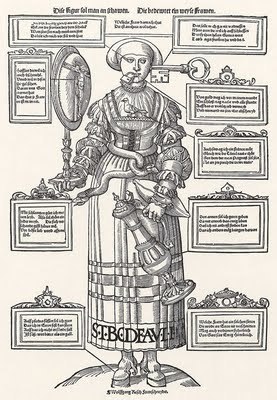
The ideal housewife, circa 1525, by Anton Woensam.
Sources:
Hobsbawn, E.J., "The Crisis in the Seventeenth Century," Crisis in Europe 1560-1660, Trevor Aston, ed., Routledge, London, 1983.
Hoher, Frederike, "Hexe, Maria, und Hausmutter--zur Geschichte der Weiblichkeit im Spaetmittelalter," Frauen in der Geschichte, Vol. III, Kuhn/Rusen, eds, Paedagogischer Verlag Schwann-Bagel, Duesseldorf, 1983.
Institorus, Henricus, Malleus Maleficarum, Benjamin Blom, Inc., New York, 1970.
Larner, Christine, Enemies of God, John Hopkins University Press, Baltimore, 1981.
Merchant, Carolyn, The Death of Nature: Women Ecology, and the Scientific Revolution, Haeprer & Row, San Francisco, 1979.
Midelfort, Erik, H.C., Witch Hunting in Southwest Germany 1562-1684: The Social Foundations, Stanford, 1972.
Rauer, Brigitte, "Hexenwahn--Frauenverfolgung zu Beginn der Neuzeit," Frauen in der Geschichte, Vol. II, Kuhn/Rusen, eds., Paedagogischer Verlag Schwann-Bagel, 1982.
Schneider, Joachim, Heinrich Deichsler und die Nuernberger Chronik des 15. Jahrhunderts, Wissenliteratur im Mittelalter, Vol. 5, Reichert Verlag, Wiesbaden, 1991.
Trevor-Roper, H.R., The European Witch-Craze of the Sixteenth and Seventeenth Centuries, Harper & Row, New York, 1969.
Published on August 27, 2011 02:36



